Nimrod
Nimrod (Hebrew נִמְרוֹד): legendary hero, mentioned in the Bible and known from Jewish, Christian, and Islamic traditions.
Original Story
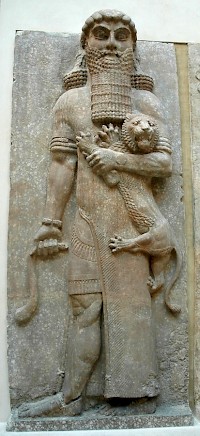
Nimrod, the son of Kush, grandson of Ham, and great-grandson of Noah, is mentioned on several place in the Bible, most explicitly in the "Table of Nations" in Genesis.
Kush was the father of Nimrod, who became a mighty warrior on the earth and a mighty hunter before the Lord. Therefore it is said, “A mighty hunter like Nimrod before the Lord”. The beginning of his kingdom was in Babylon, Uruk, Akkad, and Kalneh in the land of Shinar. From that land he went to Assyria, built Nineveh, Rehoboth Ir, Kalhu, and the great city of Resen between Nineveh and Kalhu.note
The name "Nimrod" could be applied as a synonym for Assyria. If there is any need to identify this legendary figure with a figure from Mesopotamian civilization, this may well be the heroic god Ninurta, who was a warrior, a hunter, and a founder of human civilization. However, the type of great hero is quite common and there may have many models, even historical kings like the Sumerian Lugal-Banda, the Akkadians Sargon of Akkad and Naram-Sin, and the Assyrian Tukulti-Ninurta I. Assyrian sculpture like the reliefs of the spirits in Khorsabad (picture) may have been the background of the Nimrod-figure too.
He may also have been a symbol of Mesopotamian civilization in general: the list of cities mentioned above can almost be read as a summary of Mesopotamian history, especially of the spread of the cult of Ninurta. It is perhaps significant that the Jewish prophet Micah uses "Nimrod" to signify "Mesopotamia".note Of course these theories are not mutually exclusive.
Legend
Because Nimrod was a rather vague character without clear history, he could easily be used in folk tales (cf. Kreon in Greek tragedies). In about 40 CE, Philo of Alexandria identified him as the builder of the Tower of Babel (the Etemenanki).note Half a century later, Flavius Josephus described "Nebrod" as a tyrant.note
At about the same time, an author known as Pseudo-Philo described a conflict between Nimrod and Abraham.note While Nimrod was building the Tower of Babel, some pious people refused to take part in it, including Abraham. The king wanted to throw the rebel into a fiery furnace but Abraham was miraculously saved.
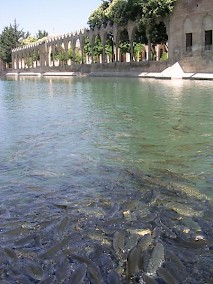
There was also a positive tradition about Nimrod, found in a Targum (Aramaic translation of the Bible) attributed to Jonathan, based on the words “a mighty hunter like Nimrod before the Lord”, which were read as “a mighty warrior for the Lord”. In this tradition, Nimrod was presented as leaving Babylon, because he refused to take part in the building of the Tower of Babel.note This positive interpretation did not prevent the author of the Targum from presenting the negative legend as well, and describe how Abraham's brother Harran died in the fiery furnace.note
The name of brother Harran brought the tradition to the city of Harran or, to be more precise, to nearby Edessa. (This town was also called Urhai, which resembled Ur, the home town of Abraham.) Here, the Jewish legend became part of Christian and Islamic tradition, mixed with an older, pagan cult of sacred fish. In this story, Nimrod wanted to throw Abraham into the furnace but the fire changed into water and the pieces of wood changed into fishes.
This must be an adapted version of an ancient Syrian cult, like the one mentioned by Xenophon.note In any case, the pond was already there in the fourth century, as it is mentioned by the Christian pilgrim Egeria, who refers to the pool in her travelogue.note
Ruins
Many ruins in the Middle East have been called after Nimrod: e.g., the city of Borsippa, the Assyrian capital Kalhu, the citadel of Edessa, a castle on the Golan Heights near Panias, and of course the funerary monuments of Antiochus I Theos of Commagene on Mount Nimrod.
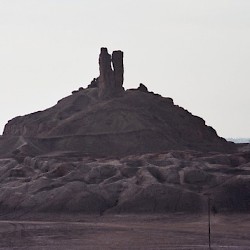 Borsippa, Ziggurat |
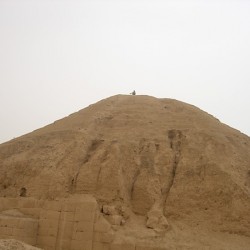 Nimrud, ziggurat (demolished by terrorists in 2016) |
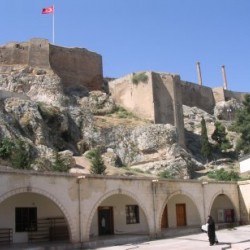 Edessa, Citadel |
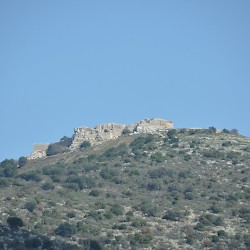 Panias, Crusader Castle Nimrod |
Literature
- Van der Toorn, K. & Van der Horst, P. W., “Nimrod Before and After the Bible” in: Harvard Theological Review 83/1 (1990) 1-29.